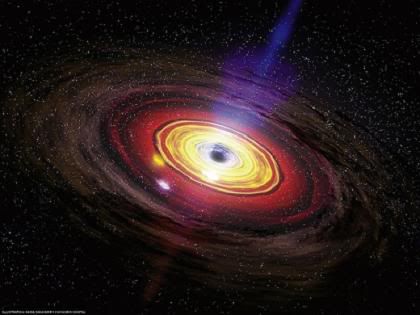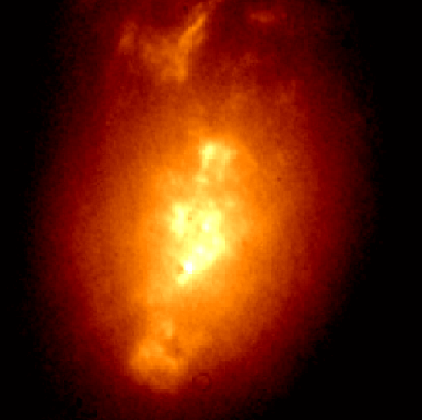Post by glactus on Mar 9, 2010 18:10:22 GMT

The Chandra x-ray space observatory
New observations from NASA's Chandra X-ray Observatory provide evidence for powerful winds blowing away from the vicinity of a supermassive black hole in a nearby galaxy. This discovery indicates that "average" supermassive black holes may play an important role in the evolution of the galaxies in which they reside.

Black hole galaxy
For years, astronomers have known that a supermassive black hole grows in parallel with its host galaxy. And, it has long been suspected that material blown away from a black hole - as opposed to the fraction of material that falls into it - alters the evolution of its host galaxy.
A key question is whether such "black hole blowback" typically delivers
enough power to have a significant impact. Powerful relativistic jets shot
away from the biggest supermassive black holes in large, central galaxies in clusters like Perseus are seen to shape their host galaxies,
Astronomers used Chandra for five days to observe NGC 1068,one of the nearest and brightest galaxies containing a rapidly growing supermassive black hole. This black hole is only about twice as massive as the one in the center of our Galaxy, which is considered to be a rather ordinary size.
The X-ray images and spectra obtained using Chandra's High Energy Transmission Grating Spectrometer showed that a strong wind is being driven away from the center of NGC 1068 at a rate of about a million miles per hour. This wind is likely generated as surrounding gas is accelerated and heated as it swirls toward the black hole.
.

NGC 1068 galaxy
A portion of the gas is pulled into the black hole, but some of it is blown away. High energy X-rays produced by the gas near the black hole heat the ouflowing gas, causing it to glow at lower X-ray energies.
"In the future, our own Galaxy's black hole may undergo similar activity,
helping to shut down the growth of new stars in the central region of the Milky Way,"
Credits: Dan Evans of the Massachusetts institute of technology.
This is part text only. See full text and all scienits involed at SpaceDaily.com
www.spacedaily.com/reports/How_Black_Holes_May_Shape_Galaxies_999.html


